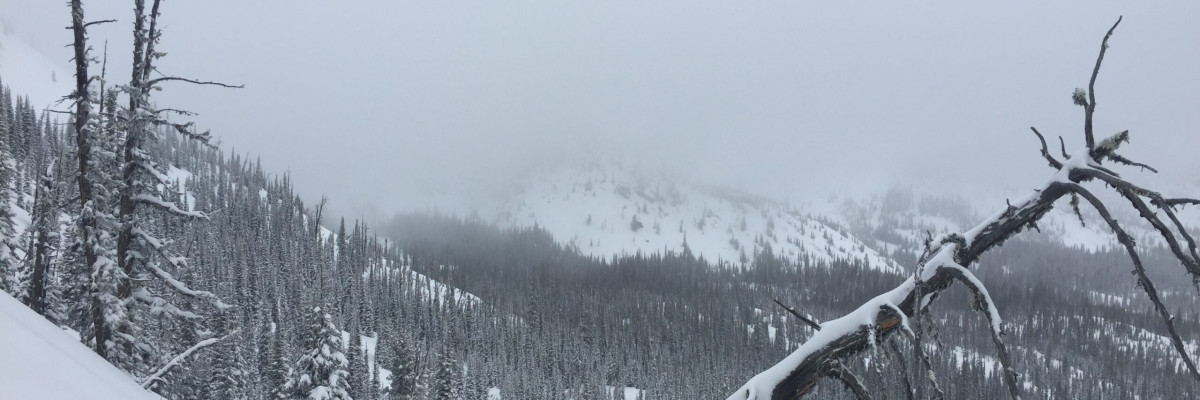The current avalanche danger is MODERATE for the west central Montana backcountry. With a new load of snow yesterday and today, human triggered avalanches are possible in specific areas. Carefully evaluate how the new load is affecting a slope when choosing areas to recreate.
Good morning, this is Logan King with the West Central Montana Avalanche Center’s avalanche advisory for Tuesday, March 15th, 2016. This danger rating does not apply to operating ski areas, expires at midnight tonight and is the sole responsibility of the U.S. Forest Service.
Weather and Snowpack
Winter has made a welcome return to west central Montana. The northern half of the advisory area received the lions share of snow since sunday night. Snow totals in the northern reaches are around 6-12 inches bring around an inch of SWE since Sunday night. In the southern half of the region snow totals were 2-5 inches. Strong winds were also seen yesterday afternoon peaking with gusts in the 40’s out of the West. Winds are currently 16mph gusting to 33mph from the W at Point 6 and are more moderate further south at Deer Mountain where current wind speeds are 7mph gusting to 13mph from the SSW.
The primary avalanche concern today will be windslabs above 7,000 ft. With strong winds yesterday and new snow for transport lee terrain will have windslab formation and will be the most likely place to trigger slab avalanches today. Avoid traveling on or under terrain that has been recently wind loaded.
The new snow was a welcome change and Travis and Dudley were in the Rattlesnake yesterday. They found 6+ inches that was falling on yet another crust. The new snow on the crust will result in loose snow avalanches on terrain steeper than 35 degrees. There are 3 distinct crust in the upper portion of the snowpack. The rime crust and the presidents day melt-freeze crust are of most concern, they continue to give clean shears in compression tests but don’t propagate (video). Dig pits and look for areas where the crust is reactive and has facets near by. Any of the crusts may start to propagate with the new load so take the time to look for them and determine if they are reactive.
Weather and Avalanche Outlook
Old man winter is going to linger for a few days bringing waves of snow showers to the area that may have intense snowfall during some periods. The cold wet pattern will continue through mid-week, with today being the best chance for significant snow accumulations. An additional 2-6 inches are expected today while the next few snow events will have more modest snow accumulation. Conservative decision making would be wise as the inches start to stack up, avalanche danger will increase as the snowfall does. Stay aware of conditions as they change throughout the day.
Ski and ride safe, Travis will issue the next advisory on Thursday.














